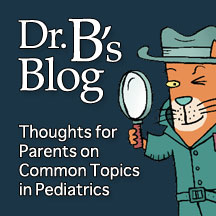The medical name for a baby’s soft spot is called the anterior fontanel. This is an opening between the bones of the skull.
Filter by Topic:
Do umbilical hernias need to be treated?
Umbilical hernias are caused by a weakness in the ring of muscles that surround the belly button.
Reassuring older kids that shots don’t hurt that much
Older kids almost always end up being surprised that the shot hurt less than they thought it would. Why does this happen?
How to take a rectal temperature in newborns
Once you take your baby home, you should take rectal temperatures if you’re concerned that the baby is sick or has a fever.
How much calcium and Vitamin D do children need?
The Institute of Medicine updated their recommendations for calcium and Vitamin D a few years ago.
Is scarlet fever still dangerous?
Before the development of antibiotics, scarlet fever was a deadly disease.
Does your baby’s head have a funny shape?
A baby’s head will take on an unusual shape if he spends more time sleeping with his head in one direction.
What is tummy time, and why is it important for infants?
Never leave the baby alone in this position, even for a second, or she may roll over and hurt herself.
How does a circumcision heal?
During the healing process, it’s common for the glans to develop small yellow patches.
What to do if your baby has lazy eye
If the baby’s eyes are constantly out of balance or wander after 6 months of age, see a pediatric ophthalmologist.
Getting your newborn to track an object
Newborn babies will look at their parents right after birth, but their eyes can’t do more than “fix” on objects for a few weeks. Between 1 and 2 months of age, babies will begin to follow objects during quiet, alert periods. It’s important to realize that this is...
Understanding referred pain in children
Have you ever watched a TV show where someone who’s having a heart attack grabs his left arm or shoulder? Have you ever had a stabbing pain in your forehead or the bridge of your nose after eating ice cream too quickly? With a heart attack, the source of the pain is...
What to do if an infant rolls over in sleep
For over 20 years, pediatricians in the United States have recommended that infants sleep on their backs. One of the questions that parents frequently ask is what they should do if their baby starts rolling over before 6 months of age. Although babies occasionally...
Five early childhood developmental milestones you probably haven’t heard of
When parents think about developmental stages in their children, the ones that come to mind are major milestones like smiling, crawling and talking, etc. Despite the obvious importance of these landmarks, I am queried on a regular basis about a handful of “lesser”...
Parent’s Cheat Sheet: Describing coughs (and other noises) to the doctor
When children come down with respiratory illnesses, they make lots of noises. The words parents use to describe these noises don’t always agree with how the doctors use the terms. Here’s the lowdown on the noises kids make when they have a cold or the flu. Congestion....

FEATURED POSTS
No Results Found
The page you requested could not be found. Try refining your search, or use the navigation above to locate the post.